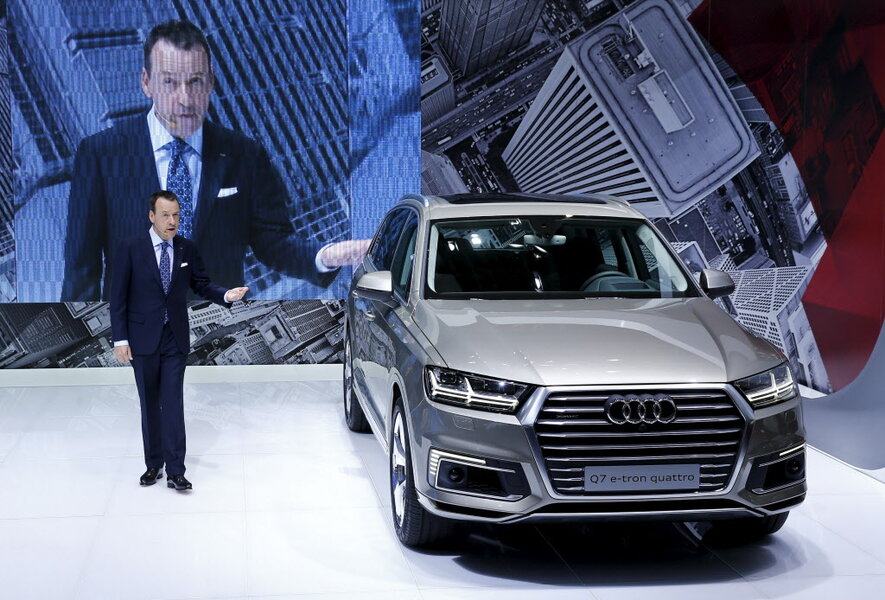New plug-in hybrid models are meant to attract a Chinese audience
Loading...
Between now and 2020, the three German luxury brands--Audi, BMW, and Mercedes-Benz-- will collectively add more than a dozen plug-in hybrid models to their lineups.
The goal is to offer a plug-in hybrid version for almost all of their most popular vehicles, most with U.S. range ratings of 15 to 25 miles.
With a few exceptions, sales of these models in the U.S. are likely to be extremely low against those of, say, the latest Chevrolet Volt with its 53-mile range.
But these plug-in hybrids aren't meant first and foremost for the U.S.
Their focus is the Chinese car market, which now offers a variety of national, state, and local incentives for what are called New Energy Vehicles, basically any car that plugs in.
Both plug-in hybrids and battery-electric vehicles fall into the category, but the former are expected to be far more popular than electric-only models.
Chinese maker BYD--which outsold Nissan, Tesla, and General Motors in plug-in cars last year--reports that plug-in hybrids accounted for more than 80 percent of its total of 62,000 sales last year. Battery-electrics were just 18.6 percent.
That's due to the much higher proportion of affluent Chinese buyers who live in apartment buildings, where home charging is far more challenging than in U.S.-style single-family homes.
Indeed, a plug-in hybrid Mercedes-Benz S-Class sedan qualifies as a New Energy Vehicle.
So its owner can enjoy the lower fees, preferential registration, and other perks offered to NEVs in China's major cities--even if he never once plugs it in.
Closer to home, this issue was illustrated by the example of an early fleet of Chevrolet Volts offered for sale in July 2014 as used cars.
Their blended gas mileage was very close to the car's 37-mpg rating in range-extending mode, indicating they had rarely if ever traveled solely on electricity from the grid after being plugged in.
The company that bought the Volts for business use would reimburse employees for the gasoline they bought, as it turned out--but not for the electricity used to recharge the cars at home.
That meant that the Volts essentially ran full-time as hybrids, never as pure electric cars. And a Chinese S-Class may well do the same.
Still, German luxury marques--along with Cadillac as well--need to offer cars that newly affluent Chinese buyers both desire and can easily register and use in the most polluted cities.
Hence: plug-in hybrid variants of their volume vehicles.
This was confirmed last month by the head of Audi China, Joachim Wedler, as quoted last month by China Daily:
The New Energy Vehicle strategy for Audi is very clear: We now will deliver more [plug-in hybrids] to the market ... We have already launched A3 e-tron, now the Q7 e-tron, and the A6 e-tron in a long version.
Audi as a premium brand looks to fulfill the CO2 emission requirement by the Chinese authorities. We will deliver enough NEVs to the Chinese market, locally produced and imported.
From the customers' daily usage point of view, they need charging stations. We need to play our role in investing charging poles for NEVs with societies, communities, independent brands and the government. To break through our strategy, we need a complete, functional charging structure all over China.
Wedler also hones in on the major challenge for electric cars in China: charging infrastructure.
Meanwhile, however, the plug-in hybrid versions of global luxury cars are expected to sell well in China--proportionally far better than they do in North America, in fact.
That's because, unlike battery-electric vehicles, they don't necessarily have to be plugged in at all.
This article first appeared at GreenCarReports.







